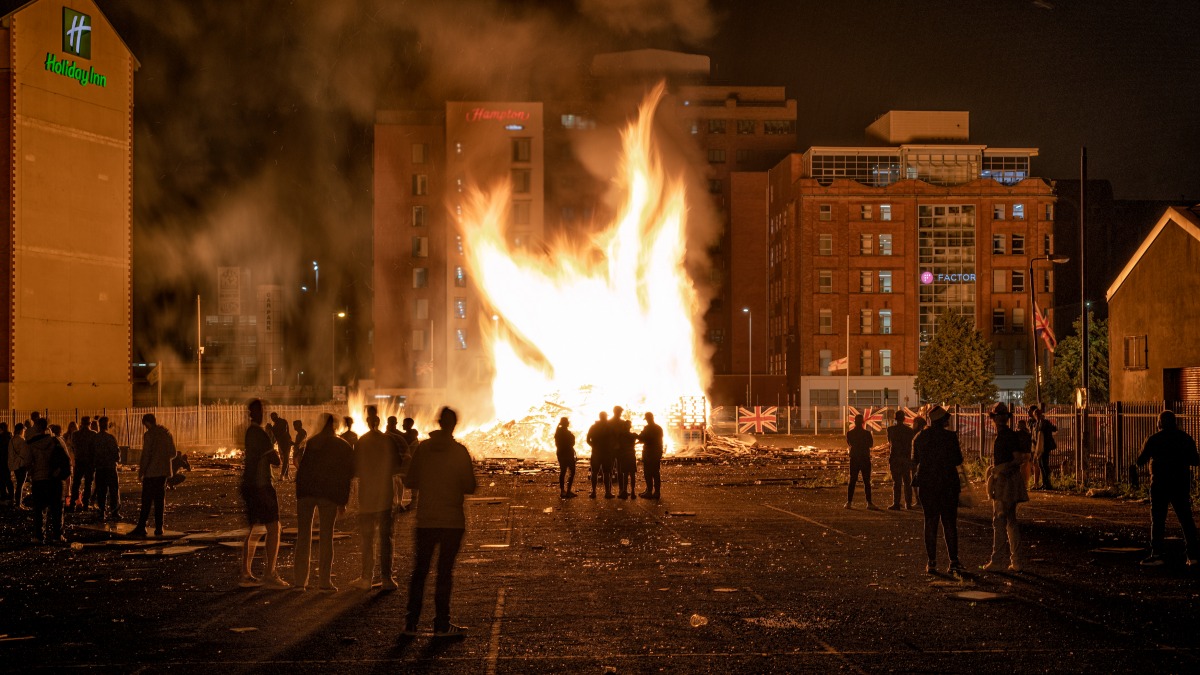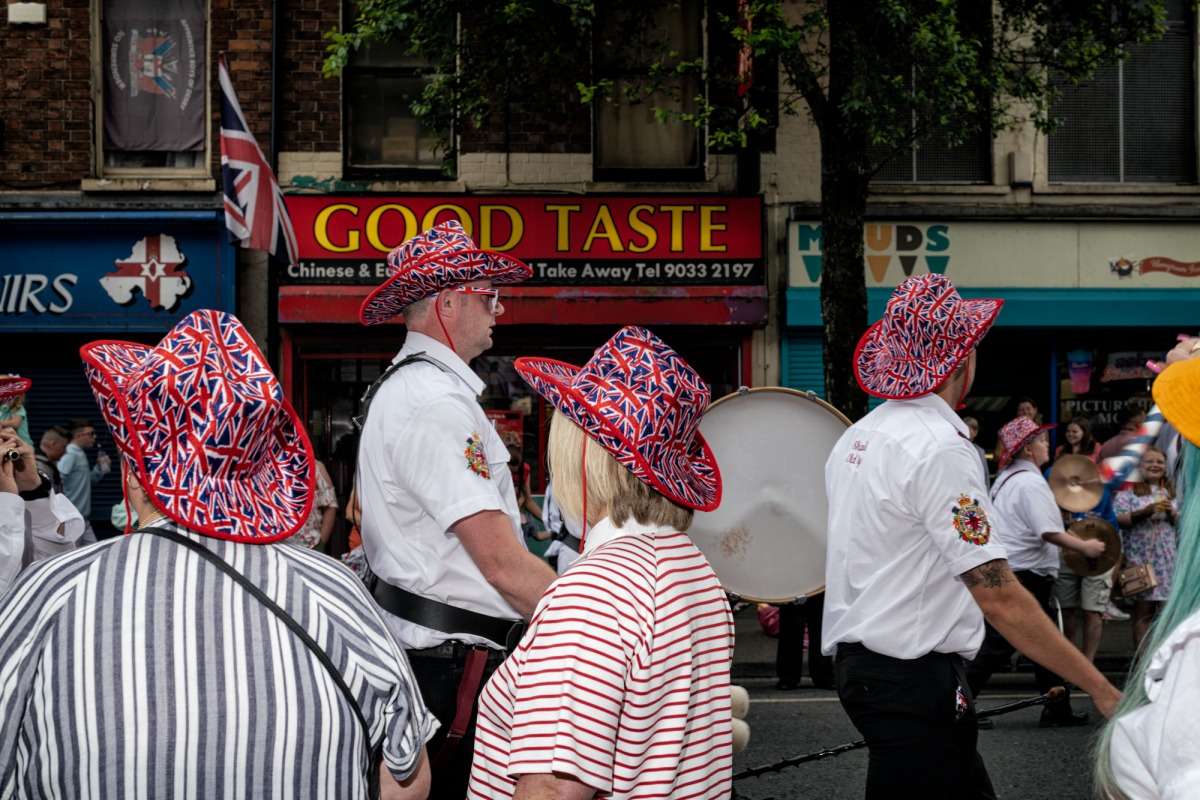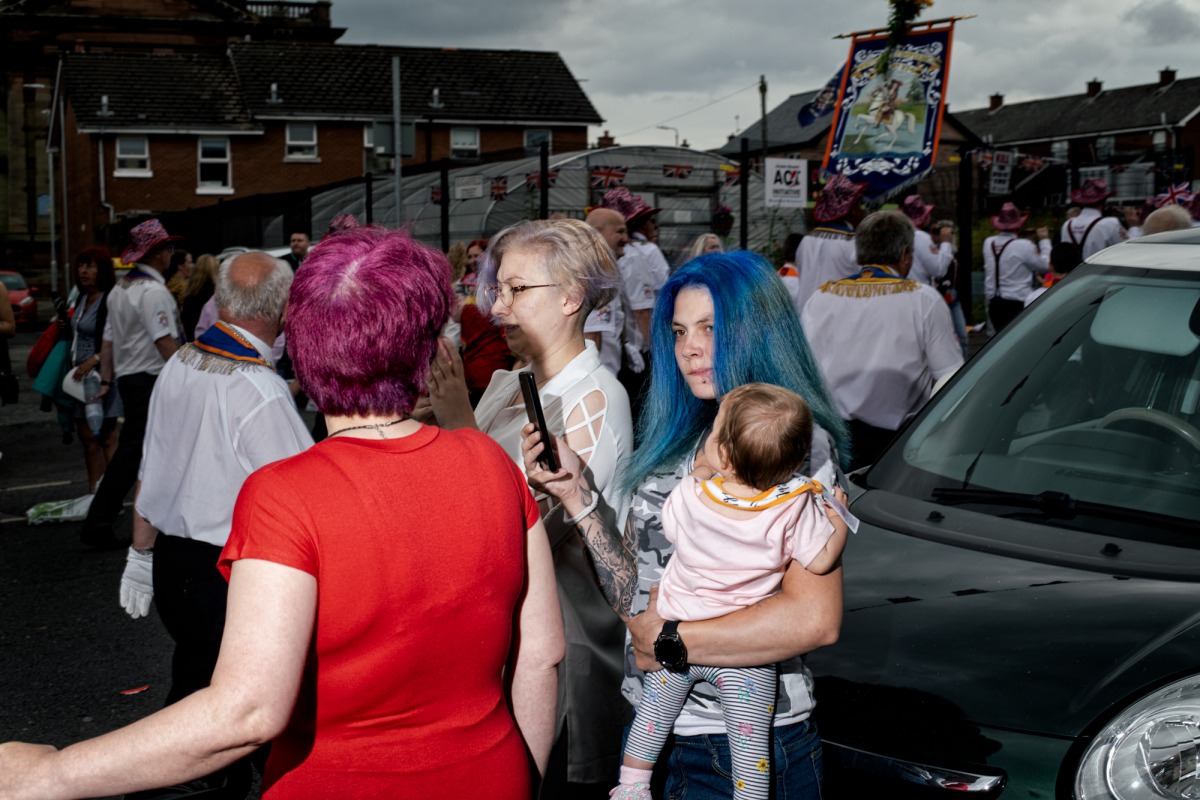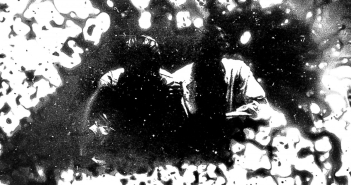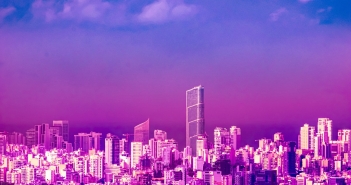In interview with Daniele Idini, photographer Graham Martin reveals he was drawn to cover the Twelfth in Northern Ireland after developing an interest in geopolitical events while living in Brazil. Before his trip North he expected trouble, but encountered a surprisingly welcoming atmosphere, even in hardcore Loyalist areas, although much of the iconography remains disconcerting to any visitor from the South.
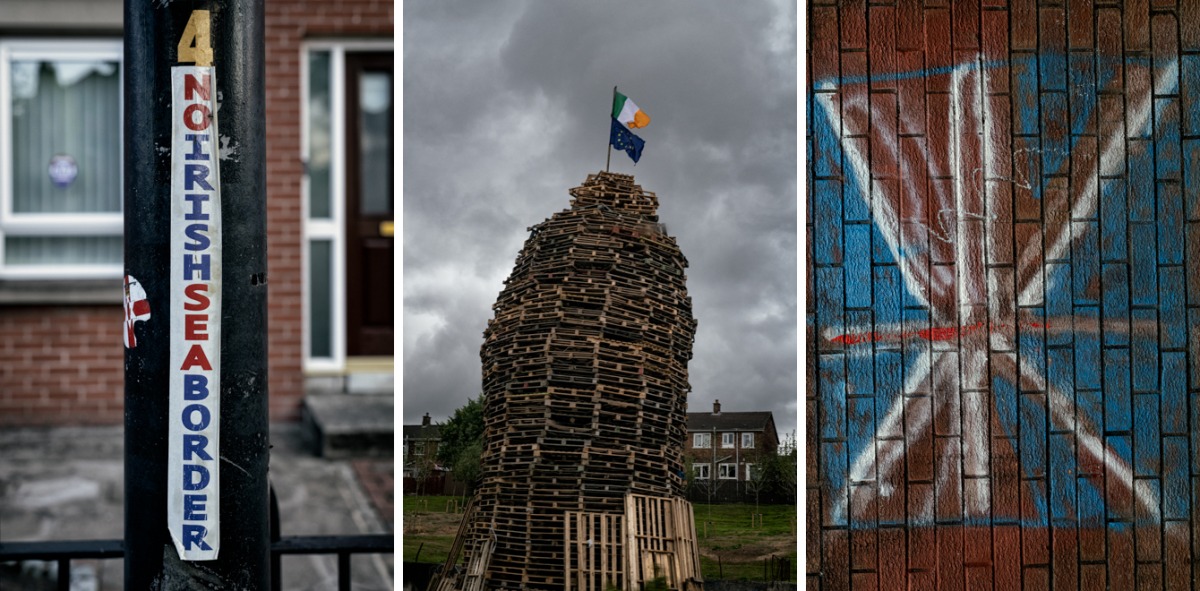
Daniele Idini: Are you a regular visitor to Northern Ireland?
Graham Martin: No not really, and that’s part of why I wanted to go with a camera. As you know, photography is a great tool for attempting to explain things to others, but also to yourself. It’s a great way of coming to terms with things, understanding things and I, like many in the South am aware of all the stigmas attached to the North. Having been born in the 1980s I do remember going up with my parents as a kid and although already relatively peaceful, there was still a physical border and I can remember passing through the checkpoints, seeing the walls and turrets without fully understanding what it all meant. Since then, any visit I made up there and over the border was for a shopping trip or for touring the Giants Causeway and Antrim coastline. My initial impression crossing the border was how good the quality of the roads were compared to the South, the red letterboxes, or the Union Jack painted on the curbs. Later, when I had a cell phone, there was the network switching over; it always felt slightly surreal. It was only in later years, when I started to orientate my photography more towards photojournalism that I started taking an interest in geopolitical events. Mostly abroad at first (I really began to take photography seriously when I emigrated to live In São Paulo, Brazil from 2012 to 2016), but then, you start to become curious about your own backyard; which you mainly ignore at first, because it always seems like it’s something that you want to get away from. So, for me, this recent trip was the first time I went up looking at it in a new light, and that was because of photography.
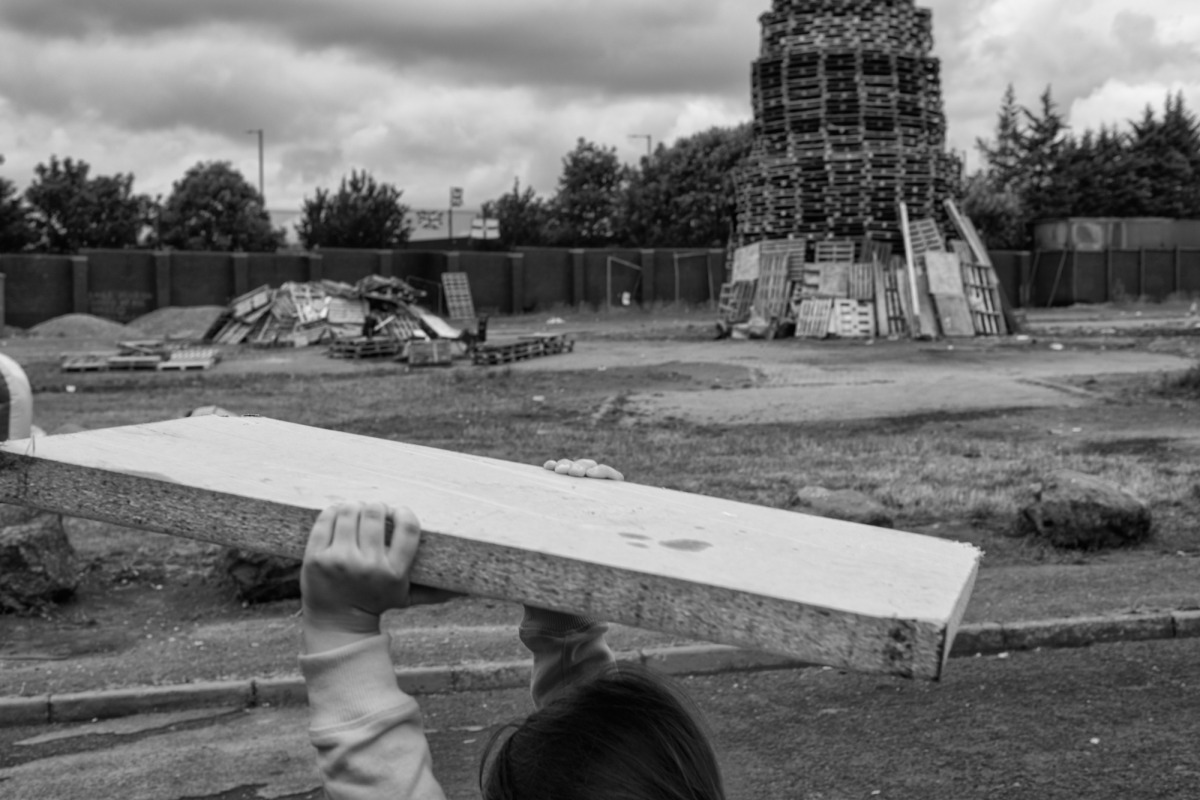
A child adds to the pyre before the Eleventh Night bonfire at Mountview Street estate off the Crumlin Road
Daniele Idini: In a previous article, which included interviews with a number of influential actors, we reported on rising tensions. We encountered a delicate situation, with a multitude of factors are at play. A combination of a Covid-19-related crisis; the effect of Brexit negotiations on the Good Friday Agreement, which was implemented in the context of the UK being a part of the European Union. What did you expect to happen on the Twelfth this year, and did it transpire?
Graham Martin: I genuinely thought it could go either way. There was all this talk of it potentially being heated, and I did reach out to some contacts who are originally from the North, and from the Protestant community, to ask advice on where would be interesting for me to go to see the parades and what bonfires would be accessible to outsiders. They gave their advice and warned that it looks like it’s going to be quite a heated Twelfth this year, because of everything that is going on at the moment. The advice I received was generally like “So, you know, keep your distance, keep your accent down, be sharp, keep your wits about you”, that kind of thing. When you get that kind of advice from people who are from there and who know the place, that colours your perspective and perception of things. I still went with an open mind, but like with everything, whenever there’s a lot of discussion, build-up and anticipation, quite often it doesn’t quite end up amounting to much at all, which ended up kind of being the case. There were some contentious bonfires built close to peace walls and talk of the PSNI forcibly removing some, which ultimately they didn’t.

Smoke rising in the Sandy Row area on July 10th indicates a pyre has been set alight a night early perhaps by Nationalists saboteurs…
Some of the bonfires were set alight the night before and I think there was one youngster, of maybe fourteen years-of-age, who got badly burned, which is a separate issue, but that was kind of the extent of any major incidents or outbursts and I actually felt warmly welcomed there. Any kind of feeling of apprehension was ultimately my own based on preconceptions. I arrived there with my guard up and found that there was no real need for that. I could walk around freely, could photograph in any neighborhood, could approach and talk to people on the streets. Even on the Shankill, which is notoriously Loyalist, I was taking pictures of people openly and they would want me to send them to them by email.
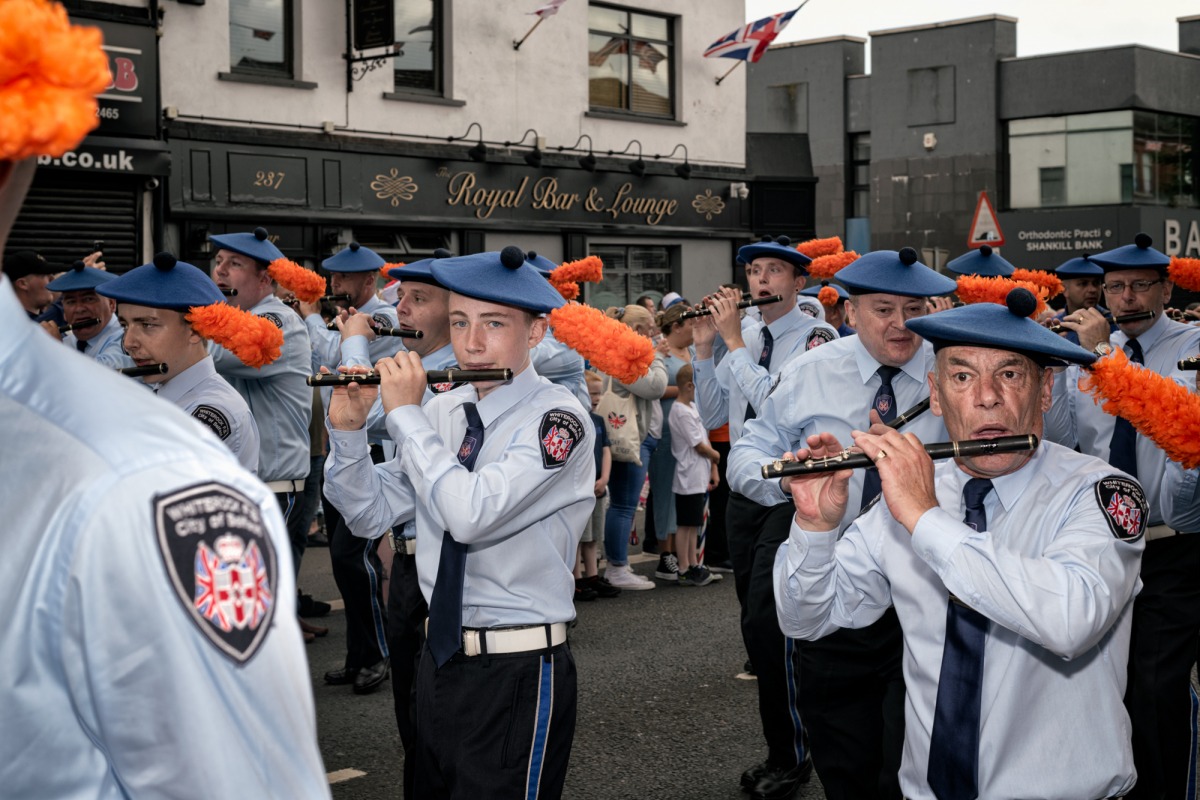
Orangemen march down the Shankill Road on July 12th.
There was a little bit of bemusement and surprise when they realised that I was from the South, but perhaps they respected that. So I got comments like “fair play to you” . You could say that that general calm I experienced was very much a planned thing, in light of everything in the news and I think there was a marked intention to keep things civil and peaceful.
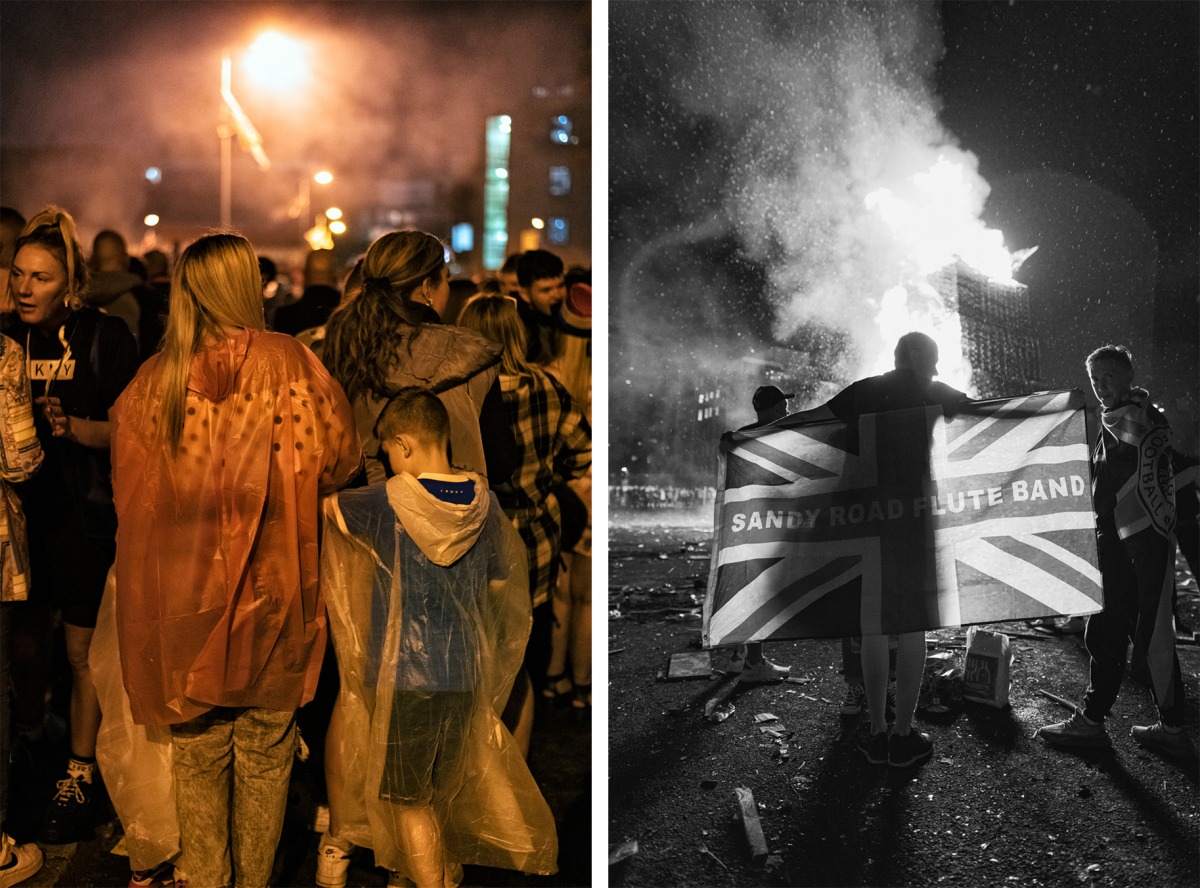
Spectators at the Sandy Row bonfire on July 12th night.
On seeing my camera one guy at the bonfire on Sandy Row came up to me and said, “don’t go making this look like something it’s not. Nobody’s fighting here. Everybody’s happy. You know, everybody’s peaceful. There’s going to be no violence here. Don’t go back reporting something that it isn’t, like the papers tend to do.” They notice that this big night of the year for them is always marked with negative press, with criticism, and I think there was an intention overall to show people that the Twelfth could pass off peacefully, and there was going to be no tension.

Orangemen march down the Shankill Road on July 12th.
Daniele Idini: We can say then that there was an effort to keep the tension to a minimum. Yet, as I see from your pictures, there were some controversial messages and flag burning. What do these provocations, if we can call them this, really mean in this context?
Graham Martin: Every year the same flags and slogans are burnt on the fires. The Irish tricolour is burnt. You have effigies of Bobby Sands burnt, the gay flag, the Palestinian flag. You have pro-Israel graffiti around on the walls, which is just as provocative. It seems paradoxical that they identify themselves with Israel as a kind of a small nation that has the right to be in that particular territory. It’s just very confusing to see the Tricolor and the Palestine flag up in flames, and yet the people are warmly welcoming. They’re quite civil in person, but at the same time you see graffiti around stating K.A.T. (“Kill All Taigs”). Taigs is what they call Catholic nationalists, the Irish. You’re walking around meeting people, photographing people, and to your left, there’s K.A.T. graffiti, to your right, there’s a big, multi-storey bonfire with your nation’s flag on!

Bonfire Pyres on July 10th ready for The Eleventh Night celebrations at Sandy Row, Shore Road, Tigers Bay and Donegal Pass.
They’re demonstrating that they hate you and at the same time, they’re willing to open up and talk to you and shake your hands, so what’s the true feeling there? It’s very jarring. On the other side, when you walk through Catholic neighbourhoods like Ardoyne, not too far from the Shankill, in peace time, although IRA murals still exist, most of the more aggressive ones have been decommissioned. Many now are promoting sports and social community activities, environmental issues, and there are little or no flags. The odd tricolor maybe, but when you cross over onto the Shankill the murals feel more aggressive, more provocative. You’ve got those kind (such as the U.V.F murals and graffiti) up around the Shore Road, that would make you weary to enter into such areas. I walked up to one pyre as it was being built, the one that commenting on the Irish News (see image in grid “Fuck the Irish News”)* and there were a few guys hanging around finalising it’s construction. They basically told me to get the fuck out of there, so not such an open vibe. That’s the thing though; they put up these things, huge pyres with large signs and slogans that are clearly intended to seek attention, but then if you go and try and document it, you’re quickly warned to get the fuck out, so it’s quite challenging .
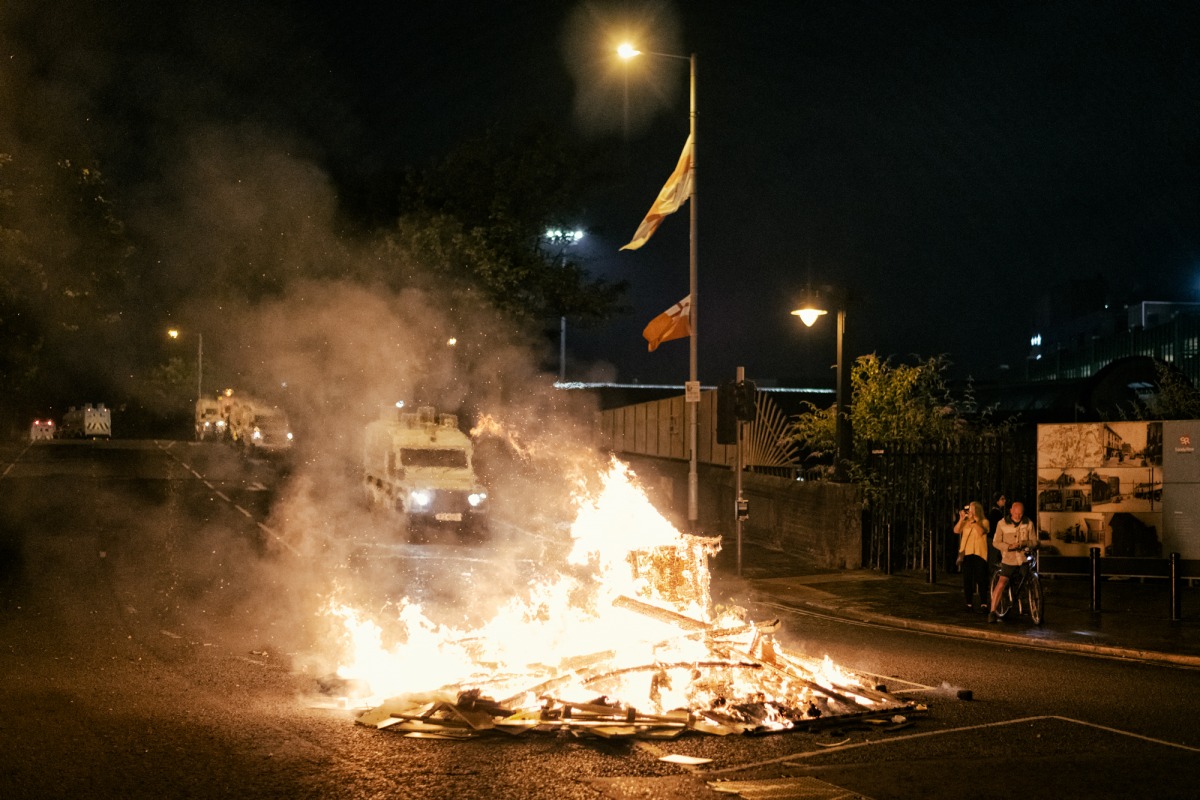
A line of PSNI Land Rover Tangis approach passing a conflagration in the Sandy Row area.
Daniele Idini: I guess it would depend on who is the intended audience for these displays. Some might include the press, but some, might be predominately intended for the community itself, and the aversion toward media is actually part of the message.
Graham Martin: Essentially, you know, you’re seeing slogans that are saying ‘Kill Catholics’. It’s beyond provocation. They can say it’s their culture and “let us let us have our night”, but there has also been homophobic and other racist graffiti on the Protestant side, denouncing the Black Lives Matter campaign for example. There a lot of topical issues that they are intentionally taking a side on. So this seems to me like a statement and not just aimed at their own community. There are paralells with the global push to a more Populist, right-wing ideology, you’ve seen pre-Brexit with Nigel Farage, and with ethnic nationalism in the U.K.
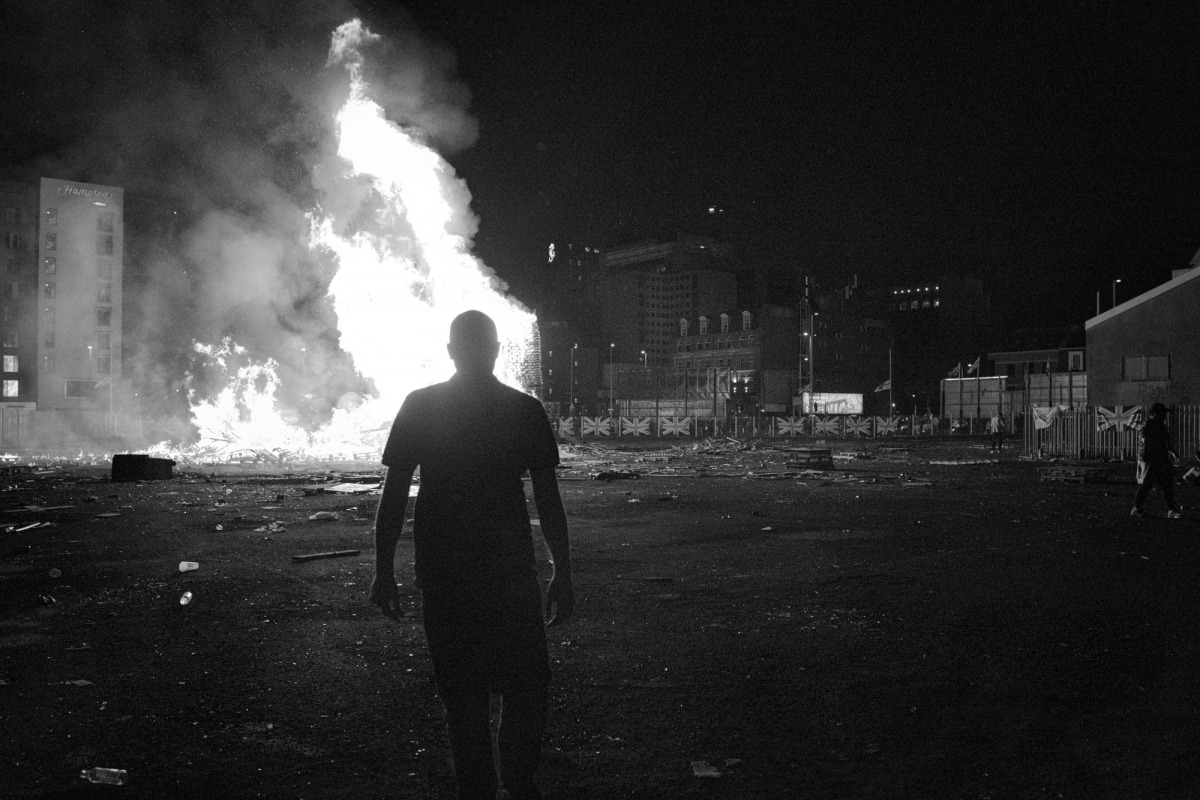
Spectator at the Sandy Row bonfire on the Twelfth.
Daniele Idini: The discontent in Loyalist communities, still focused on the Partition question, now seems to be directed equally towards Westminster. There’s a feeling of betrayal aimed at the likes of Boris Johnson, a Conservative. It has created an identity crisis, wherein there’s a feeling of abandonment from the rest of the United Kingdom; which brings a sense of fragility.
Graham Martin: It’s been building for years, I suppose. You’re talking about communities there that are really marginalised, under-developed and it doesn’t take a stretch of the imagination to see why they would be jumping on that kind of thing, and out of frustration picking on the Black Lives Matter campaign, Climate Change, or adopting the anti-masks / anti-vax campaigning. It’s really masquerading as something else. It’s a kind of rhetoric that it’s normalised that it doesn’t even get questioned anymore. The burning of flags, for example, could be seen as a form of hate crime, yet it’s completely normalised and permitted. Also, the bonfires aren’t regulated at all. There’s nobody in an official capacity to make sure they’re safe. If one falls over, which happens from time to time, it’s the size of a building falling, and on fire, It’s kind of surreal that it’s allowed to proceed as it does.
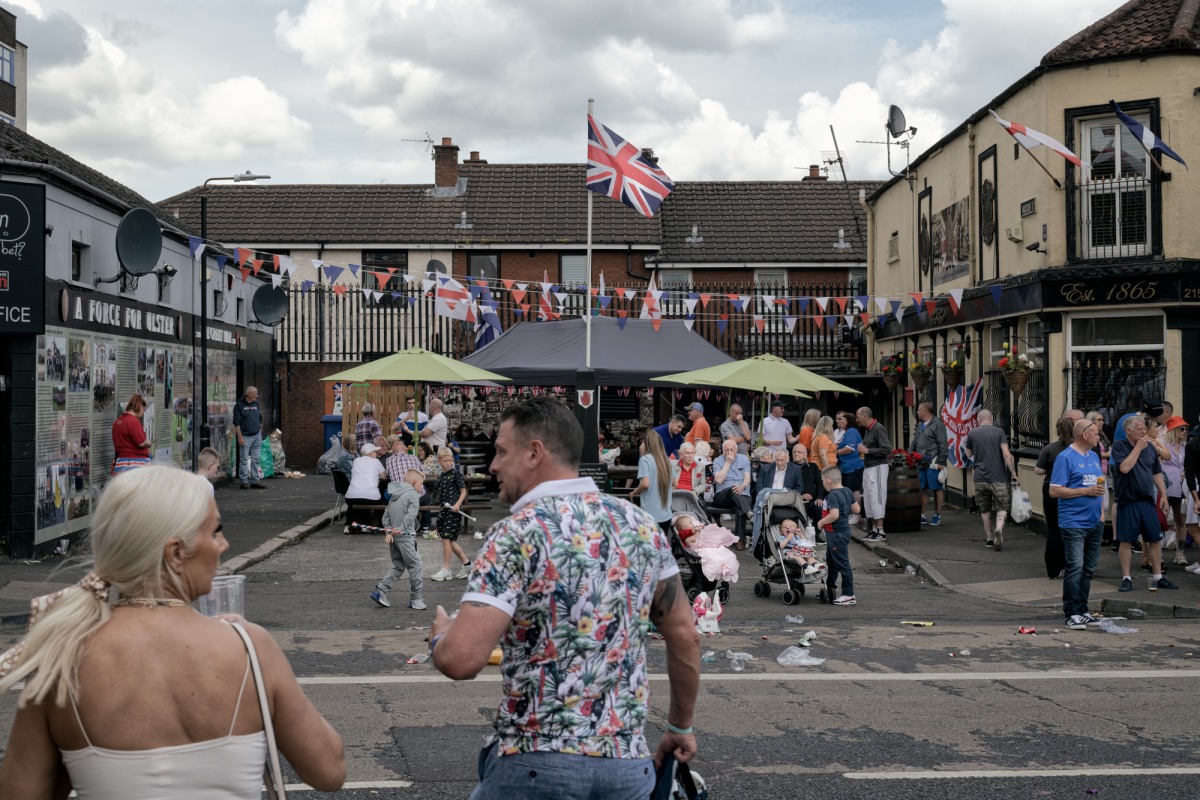
Rex Bar, a well-known UVF (Ulster Volunteer Force, a loyalist paramilitary group) meeting place on on the Shankill Road, July 12th.
Daniele Idini: I guess there is a level of negotiation going on with the authorities to try to keep the tensions to a minimum. To go back to the wider issues, Northern Ireland finds itself for the first time facing the possibility of a United Ireland that is being seen as not too remote of an option, and the result of Brexit’s negotiations is perceived by some as incompatible with the Good Friday agreement. It could be a treacherous path to save a peace treaty.
Graham Martin: There needs to be good faith and efforts from both sides, and a period where controversies aren’t dug up from the past. The difficult thing for sure is that the Troubles are within living memory for many people still; it’s not ancient history. And it’s going to take a long time for people to forgive and forget. Now it’s the Sea Border that’s causing fresh tension, and the announcement of the Statute of Limitations on investigation into the Bloody Sunday Massacre. Who knows what it will be next. It seems like it’s such a consistently fractious and volatile situation.

‘Summer of ’69’ mural on Hopewell Avenue in the Loyalist Shankill Road area, referencing the August 1969 violence which helped spark the Troubles.
And it’s not about religion, of course, but the symbolism of the churches, and the ephemera surrounding the divided beliefs remains ever present in the murals, tattoos, and the wearing of either the Catholic Celtic or Protestant Rangers football shirts. I think it’s harmful to be carrying that around as a constant reminder of superficial dividing lines between communities. But I don’t think young people are really identifying with their own faith any more, or their religion they’re born into quite as much as they used to. I think there’s a move away from labelling people based on their beliefs. That might sound naively optimistic, but I think that’s going to help things there. People can inform themselves better with the Internet and the global exchange of information, and question ingrained fears or hatred of their neighbours. You’ve seen how such a turnaround can happen in Southern Ireland over the last twenty years, where the power of the Church has waned, and all positives that have come out of that with marriage equality and Repeal the 8th. That is happening in the North also: an easing of hardline traditions which are loaded with sectarianism. And I think it’s going to hopefully have positive knock-on effects in time.
Graham Martin’s work is available below:
www.grahammartinphotography.com
https://www.instagram.com/graham.martin.photo/?hl=en

